HIStalk Interviews Sam Rangaswamy, CEO, ZeOmega
Sam Rangaswamy, MS is founder and CEO of ZeOmega of Plano, TX.
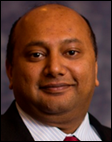
Tell me about yourself and the company.
I started ZeOmega in 2001. I came from a technical background in the airline industry and realized that the healthcare industry is really far behind in terms of adoption of IT tools.
We started the company to service the needs of payers who wanted to do disease management and care coordination. Fourteen years later, we have 24 or so million American lives on our platform. We are making a difference in the way healthcare is being managed in the country today.
How far along is the industry in the journey toward population health management and the technologies that are required to support it?
It’s an interesting perspective from where we started. What we realized was that getting provider engagement was always a challenge. Providers were never really required to do population health management or focus on value.
We quickly realized what was happening was that the kind of interventions or the care that the provider should own was pretty much outsourced to the plans, in a sense, since there were no billing codes. There were no real mandates for providers to do this. They were more focused on volume. The payers had to take on this burden, obviously, because of the full risk that they take.
We quickly realized that ultimately providers will need the same kind of capabilities. Today we are starting out with maybe a Medicare shared service program. A lot of tools out there are focusing on the population segmentation and focusing on getting them up to par with measures that are published by CMS.
But really, that’s just the tip of the iceberg. Over the last 14 years, the kind of problems we’ve solved with entities taking full risk … there will be a day of reckoning for a lot of the provider systems that that’s where they ultimately need to be.
The tools that are out there right now are just focused on population segmentation and providing gaps in care alerts. They’re just the tip of the iceberg. Ultimately, we have to get to a point where these providers can take on full risk, maybe service employers directly. That’s where we would like to see the industry mature.
Insurance companies have had those capabilities for years and now they’re turning the responsibility over to folks who don’t have them. What are the biggest pitfalls for those providers who are just starting to understand the new expectations?
What you saw at HIMSS the last couple of years is a focus on technology and analytics and very nice dashboards for providers and decision-makers to look at. But ultimately it needs to go to the next level, where there’s provider engagement, where providers are really looking at this and have a way to act upon that information without having to build entire care teams that are a very expensive resource.
Also, to a point that when they go on to take on full risk and maybe service local employers, the ability to slice and dice administrative information, not just clinical information, so that you can target people for the right set of programs. That’s where ultimately they will realize the gaps in the current tools that are available in the industry. A lot of the players that have been doing this in the disease management arena or care coordination arena for a long period of time understand these challenges and have those kinds of solutions.
Are patients, especially the most expensive ones, interested in being engaged?
You’re talking of consumer engagement. In our experience, it is probably the 1 percent of the population that are really, really obsessed with their health or taking care of themselves that will engage with all the fancy tools that are out there. The 20 percent that are the sickest that really need access to the physician, that would love to have their personal phone number because access is a big issue for them and they have complex issues, ultimately it is focusing on those individuals in terms of patient engagement that will yield the results.
Amazon uses its databases to communicate with its customers on a massive scale, yet it makes the relationship feel personal. Can that be done in healthcare?
Yes, absolutely, to the extent that you have that patient-centric view. We like to call them members because everybody starts off as a member in a community or in any system until they become a patient. To the extent that you have information about them, you can make it a very personal experience, especially with the advent of sophisticated tools on the mobile devices. You can target interventions and get engagement at that level. It’s definitely the ones that have complex conditions will be more than willing to engage.
Is patient engagement a technology problem or is it just hard for providers who never had to make an effort to keep in touch with patients to change the way they think?
Technology is an enabler, as in any human situation. Ultimately you need a whole set of staff that are trained to address this problem on the provider side. Just simple issues around health literacy or care coordination. I’ve talked to executives of hospital systems who basically think that most of the nurses should be retrained as case managers because that’s the level of intervention you need with some of these members.
As long as a human element is involved, the technology only enables and helps. Clearly the automation for the 80 percent of the population is where the technology will help. The 20 percent need that human touch in order to make that patient feel secure and trusted and participate in the process.
Going back to your early history in the market, not many companies have had both providers and insurance companies as customers. Is it hard to reach and target both sets of audiences to talk about your product?
It’s a traditional sales challenge because there are different markets and how you position the product to address their specific pain points. It’s a different set of vocabulary, if you will, at least at the current time because providers really don’t know what they need.
It is a challenge in telling the story and helping them understand where they will need to be in the future. They’re starting off ground zero with whatever platforms they can purchase today to meet their MU requirements, for example. But eventually they will need to scale up and they will need those kinds of platform capabilities. Obviously it’s the messaging and helping them understand what they don’t know is always a challenge in the new market and that’s what we are also seeing.
Do you think Meaningful Use is driving bad decisions or encouraging providers to make decisions too quickly just to check the box?
Yes, absolutely. Whenever there’s a mandate and when the requirements are a checklist item and how you meet them is up to you, you can cobble together a set of platforms that are really not integrated, becoming more inefficient than what you were without them. Certainly I think there is that aspect as well.
How do you distinguish he company from competitors and get your message out among all the noise in the market?
We have to continue to tell the story like we have. Obviously there’s a education piece. We have to get the ear of the decision-makers and paint the picture of what they will need in the future.
While they may start off with just a little widget on our platform, eventually the benefits of scaling up and going from purely analytics to complete analytics-enabled workflow, where we reach out across the care continuum, especially when you have bundled payments and all the complexities associated with full risk. That’s the message that we are putting out there and we continue to do that.
I think we are probably an year or two away from serious providers who want to take on risk and really understand that. In a year or two, I think the market will finally come around for enterprise platforms like us.
Cerner just said in their earnings call that the population health management systems market will be bigger than the electronic health records market. How do you see that market evolving and what factors will determine which vendors emerge as the leaders?
From my standpoint, it all goes back to the reform that the Federal government is mandating. It goes back to payment reform and the focus on value, which means now the providers will have to get really efficient in their care management processes, redesigning workflows.
In terms of the EMR vendors, they were glorified data collection tools and a lot of static information for humans to process. But when we are talking about large populations to the extent of a million or two million, the kind of sophistication you need to slice and dice the population and target them to the interventions that are specific to the population, that’s where ultimately the providers will have to head.
Ultimately the EMR vendors, as much as they’re installed in a group practice or in a single delivery system, will quickly realize that healthcare information is fragmented. It’s all over the place. It’s not just about data integration, but then delivering that actionable intelligence back to the stakeholders that may not necessarily be on one EMR platform.
That’s where technologies that can take that actionable information and communicate with multiple systems in the healthcare delivery system and bring all of these payers, especially in the bundled payments scenario, being able to do effective care transitions between all the players involved in that bundled payment … that’s where eventually everybody will have to end up. It’s rules-driven workflows. It’s not just clinical data, but administrative information, information around multiple domains of health, which will ultimately drive how these processes are enabled.
Unless you can handle information across multiple domains and use that in a meaningful fashion, just collecting data and presenting a report is not going to help. I think that’s where you’ll see the industry mature to eventually.
Do you if you have any final thoughts?
Ultimately while the dashboard vendors and the analytics vendors today are getting their foot in the door, it will be interesting to see how much more the federal legislation or the laws that are unplanned or planned will impact how providers take to this. We are focused on major players, dominant players in our market like maybe a hospital system or a payer system, who have the leverage to make change in a certain region or a geography. That’s where we are focused on right now because they are the ones who have the real challenge.
We see that as the foundation. Lessons learned from these players will eventually impact how the legislation and how the laws are designed to truly affect change across the healthcare system in the country.


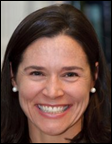


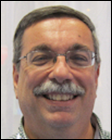

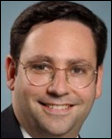
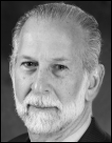

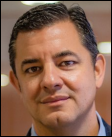
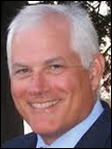
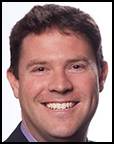



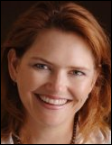
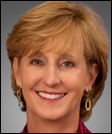




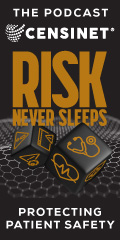











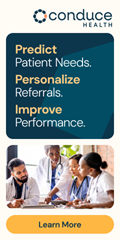














































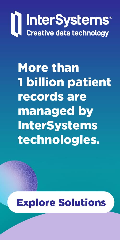










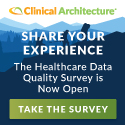






Is this HIStalk or Reddit? Hard to tell the difference with the comments being posted.